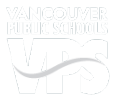Design II Showcase
Goal Area: Instructional quality
Chris Olsen, executive director of teaching and learning, introduced Thomas Jefferson Middle School Principal Tom Adams.
“You’re about to hear about one school’s journey as they sought to strengthen and revitalize the work of Professional Learning Communities (PLCs),” said Olsen. “This work is critical for many reasons, two of which I’ll highlight. First, it’s important because having high-functioning PLCs grounds the work of teachers in having collaborative and planning time in standards and for their work in the Five Dimensions of Teaching and Learning. Second, having high functioning PLCs reinforces a culture of learning and a culture of learners. That’s critical for forward movement of any school.”
Adams credited the work of the middle school principals PLC for providing the impetus to move Thomas Jefferson forward in its school-based PLC efforts. “We have common goals around increasing student learning and improving the climate and culture of our school,” said Adams.
Following a training of all middle school teachers in August, the focus of PLCs at Jefferson changed to focus on these two questions:1) What do we want our students to learn?2) How will we know if they learned it?
“With the implementation of Common Core State Standards, we needed to be more intentional with the first question,” said Adams. “We started by deconstructing the standards, putting them into student-friendly language, and then wrote learning targets and success criteria.
“Next we addressed the second question of PLCs. How are we going to know if students learned it?” continued Adams.
Jefferson’s teachers focused on common assessments, common formative assessments as checkpoints for student learning, and post tests. Rubrics allow teachers to measure the depth of knowledge and the rigor of learning that it takes students achieve each standard. This work is closely aligned with the five dimensions of teaching and learning. With this focus, teachers are able to be consistent with their expectations for students.
The Jefferson faculty also uses PLCs to work on vertical alignment for subjects across grade levels. Teachers work in PLCs to focus on what students need to master before moving on to the next grade level, e.g. sixth grade focuses on variables, seventh grade focuses on writing conclusions, and eighth grade focuses on planning and investigation. Regardless of the area of study, when it comes to assessing the focus is on the skills identified for mastery.
“By vertically aligning the curriculum and expectations for student learning, less time is needed for review from the previous year,” said Adams.
“As an administrative team we have shared responsibility with the teachers for student learning. We are a part of PLC teams and are accountable for student success. We also take time to celebrate and share the good things happening at Thomas Jefferson with one another.
“PLC is the right work. It focuses on student learning, allows teachers to meet the goals of the Teacher/Principal Evaluation Project, and has improved the culture of collaboration at Thomas Jefferson,” said Adams.
